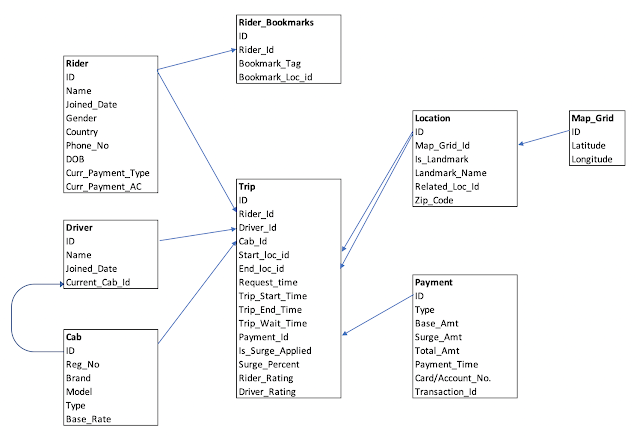Uber Data Model

In this post I will try to come up with a data model which can serve the requirements of ride sharing companies like Uber, Lyft, Ola etc. We will approach the problem as an interview and see how we can come up with a feasible data model by answering important questions. Important Entities The first step towards building a data model is to identify important actors/ entities involved in the process. In our case, if we think about our interaction with taxi apps, we can identify important entities involved. The user (i.e. Rider) is one such entity, so is the Driver/ Partner . Once we open the app, we try to book a trip by finding a suitable taxi/ cab from a particular location to another . After the trip gets finished, the app collects the payment and we are done . Ideally, the flow continues to reviews/ ratings, helpcenter in case of issues etc. but for this post we will only consider scenarios till the ride gets finished. So, to summarize, we have the following key entities;

